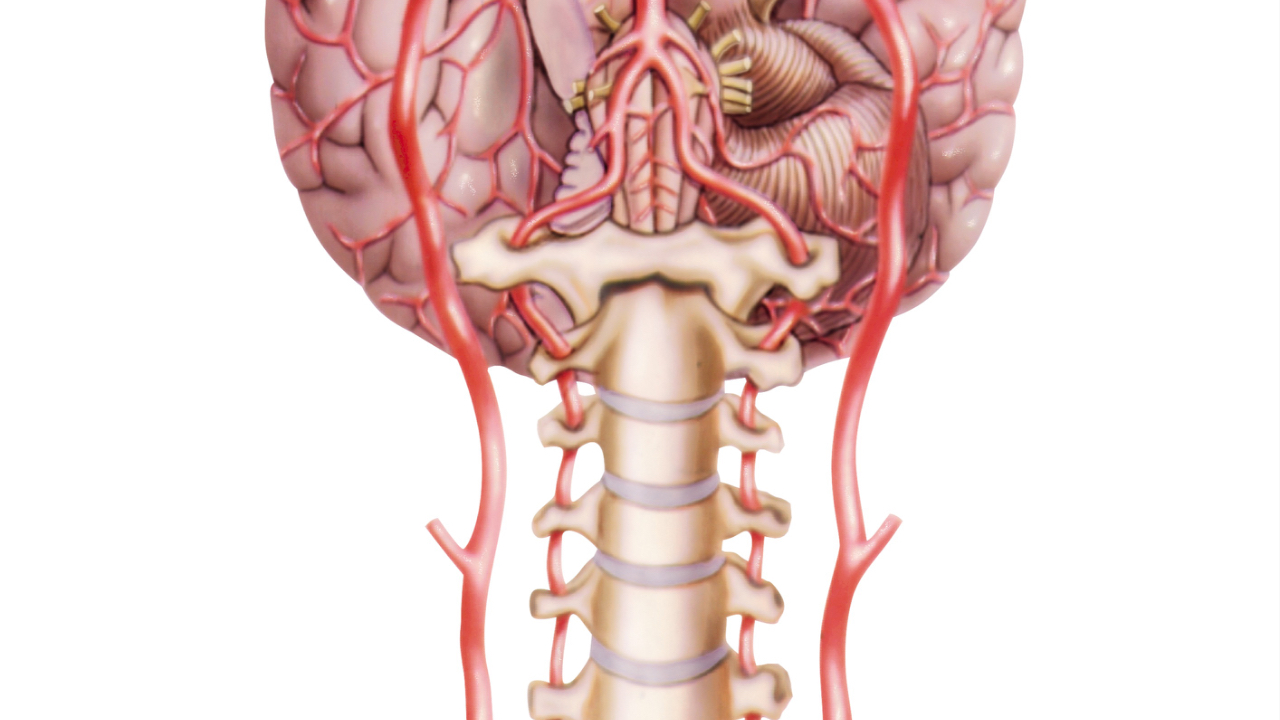Blog
HINTS Plus Test to Differentiate Stroke from Vestibular Neuritis

Have you ever seen a patient with acute dizziness and wondered whether it could be a stroke? You’re not alone. Distinguishing between a central cause such as a posterior circulation stroke and a peripheral cause like vestibular neuritis can be challenging, especially in the emergency setting.
That’s where the HINTS plus test comes in. This powerful bedside tool helps clinicians determine whether acute dizziness is due to a stroke or a vestibular disorder and it’s been shown to outperform early MRI when used correctly.
In this post, we’ll outline what the HINTS plus test is, how to perform each step, how to interpret the findings, and when to use it in practice.
What Is the HINTS Plus Tes...
Vestibular Forensics: The Vestibular System and Spatial Disorientation
Most of us do not think about the vestibular system until something goes wrong. Yet this hidden sensory system works constantly in the background, keeping us upright, stabilizing our vision when we move our head, and even helping regulate blood pressure when we change posture. However, when vestibular input is impaired, the consequences can be profound: dizziness, disorientation, blurred vision, or even catastrophic accidents in aviation and spaceflight.
Understanding the vestibular system and spatial disorientation not only improves clinical care, but also explains why pilots crash, why astronauts get sick, and why patients describe feeling like they do.
The Vestibular System and Its Role...
Pediatric Vestibular Assessment: A Guide for Clinicians

Why Pediatric Vestibular Assessment Matters
Pediatric vestibular assessment is an often-overlooked area in clinical practice. Yet research shows that nearly 50% of children with hearing loss have some degree of vestibular dysfunction (Cushing et al., 2013; Verbecque et al., 2017). Risk is higher in children with:
-
Severe hearing loss (>66 dB)
-
Structural inner ear anomalies (e.g., enlarged vestibular aqueduct)
-
Congenital cytomegalovirus
-
Usher syndrome type 1
-
Meningitis or temporal bone fracture
-
Ototoxic medication exposure
Undetected vestibular loss in children can lead to gross motor delays, poor postural control, academic challenges, and limited partici...
A Deeper Look at SVINT: A Powerful, Underused Tool in Vestibular Assessment

At North 49, I’ve been incredibly fortunate to learn from many brilliant clinicians throughout my career and I see it as part of my responsibility to share what I’ve learned along the way. My goal is that these blogs are a means of reviewing what I have learned and assist in supporting your journey by offering practical, evidence-based insights.
This blog, however, is a little different.
It’s a summary of a doctoral project by someone I’ve had the honour of working with for several years: Nycole Pataki. Nycole recently relocated from Saskatchewan to Arizona with her family and asked if I’d read her doctoral project. After doing so, I knew this work deserved a broader audience. With her per...
Concussion Guidelines for Healthcare Providers: What You Need to Know from the Latest Research

Whether you’re helping a professional athlete, a weekend warrior, an injured worker, or a senior who slipped at home, concussion management is part of your everyday clinical practice. If you’ve been in the field for a while, you’ve seen firsthand how much things have evolved.
Thirty years ago, we relied on grading systems like the Cantu Classification, Colorado Medical Society Guidelines, and AAN Guidelines. These were based largely on loss of consciousness and symptom duration, criteria we now know don’t reliably predict outcomes. Thankfully, modern concussion guidelines for healthcare providers are more evidence-informed and patient-specific.
In this blog, we’ll review three key resou...
Vestibular Neuritis: A Deeper Dive Into the Pathophysiology

Vestibular neuritis is one of the more common causes of acute vertigo seen in emergency rooms and vestibular therapy clinics alike. It is estimated to account for 3.2 to 9% of all vertigo cases seen in specialized dizziness clinics [1], and has an incidence of approximately 3.5 per 100,000 people per year [2]. While many therapists understand its classic clinical presentation of sudden onset of vertigo/dizziness lasting days, often with nausea, imbalance, and spontaneous nystagmus the underlying pathophysiology deserves a closer look.
The Classic Presentation of Vestibular Neuritis
Vestibular neuritis (most commonly due to a viral infection) typically results in an acute unilateral vestibu...
Vestibular Paroxysmia: What It Is & Why We Should Be Aware of It

In this blog, I want to share something that over the past couple of years has repeatedly come across my path being Vestibular Paroxysmia. I first remembering hearing about it from Dr. Shepard on the Talk Dizzy to Me podcast, then glanced through it on the Bárány Society website, and more recently it came up during the Advanced Vestibular Physical Therapy cohort I was fortunate to be in through the University of Pittsburgh
I’ve come to realize that, although this condition is not common, it’s certainly out there and as clinicians who work with people dealing with dizziness, we need to keep this one in the back of our minds. My approach is: if I see something once, I park it in the back of m...
Gaze Stabilization Exercises: 3 Advanced Progressions

Gaze stabilization exercises, such as X1 and X2 exercises, are essential in vestibular rehabilitation for patients with unilateral vestibular hypofunction (UVH). Standard progressions typically involve increasing the duration, transitioning from a plain to a busy background, adding balance challenges, and advancing to X2 exercises. However, beyond these standard progressions, there are additional strategies that can further enhance a patient's recovery.
In this post, we will review three additional progression options that have proven useful in clinical practice.
Gaze Stabilization Progression #1: Bringing the Target Closer
How to Perform:
Patients perform the X1 gaze stabilization exerci...
PPPD Demystified: Understanding Persistent Postural Perceptual Dizziness

Persistent Postural Perceptual Dizziness (PPPD or 3PD) is a chronic functional vestibular condition that can be a challenge to manage. While it isn’t caused by structural damage or psychiatric disorders, it’s one of the most common reasons people experience long-term dizziness. This condition is especially prevalent in specialized dizziness centers, where understanding PPPD can make a big difference in patient care. Let’s take a closer look at its symptoms, history, and what healthcare providers need to know. We hope that in sharing what we have found, this helps you better understand this challenging condition and improve patient outcomes.
What Does PPPD Look Like?
Patients with PPPD ofte...
The Storage Velocity Mechanism: A Guide for Vestibular Therapists

In an effort to better understand the Storage Velocity Mechanism (SVM) and its clinical significance—something that isn’t talked about much in courses—I decided to dive deeper into what it is, why it matters, and what I should know as a vestibular therapist. Here’s what I found.
What is the Storage Velocity Mechanism?
As we know, the semicircular canals detect angular acceleration. However, with motion at a steady speed the cupula in the semicircular canal returns to its resting position within 7 seconds. Despite this, we can maintain visual stability during sustained rotations, thanks to the Storage Velocity Mechanism (SVM).
The SVM essentially integrates and "stores" velocity informa...


